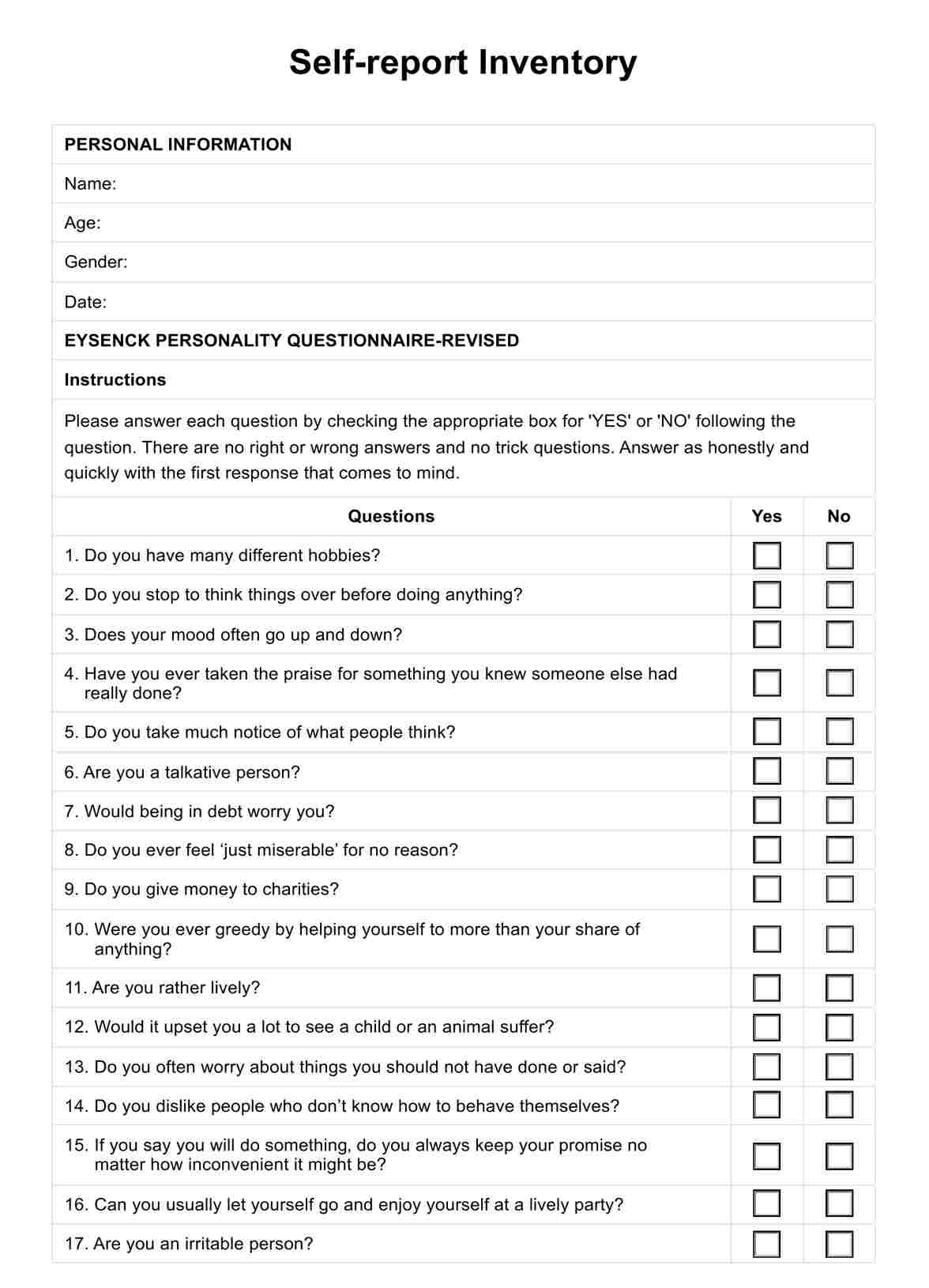The primary drawback of using a self-report inventory is the potential for response bias. This can occur when respondents, consciously or subconsciously, provide answers they believe are socially desirable or expected rather than those that truly reflect their thoughts, feelings, or behaviors. Response bias can lead to inaccurate or misleading results.

Self-Report Inventory
Access a free self-report inventory tool to add to your psychological assessment toolkit. Download your free PDF here.
Self-Report Inventory Template
Commonly asked questions
Two significant strengths of self-report inventories are ease of administration and depth of insight. These inventories can be easily distributed and completed by a large number of participants in paper and pencil format without requiring extensive time or resources from researchers or clinicians. These personality assessment tools can provide valuable insights into an individual's internal experiences, thoughts, and feelings, which might not be readily observable from the outside.
Self-report inventories are commonly used by psychologists, psychiatrists, counselors, and other mental health professionals for purposes such as diagnostic assessment, treatment planning, research, and personality assessment. They are also often used in organizational settings for employee selection, career development, and team building.
EHR and practice management software
Get started for free
*No credit card required
Free
$0/usd
Unlimited clients
Telehealth
1GB of storage
Client portal text
Automated billing and online payments











